Chris Delyani's Blog, page 10
January 8, 2013
Glacier Blue
http://www.chrisdelyani.com/events/
Glacier Blue
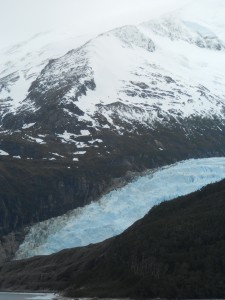
The welcome sight of blue on a cloudy afternoon in Glacier Alley.
As the ship crept along the Beagle Channel on the approach to “Glacier Alley,” I realized only then that I didn’t know what a glacier looked like. I guess I was expecting something that looked like one of the ice cubes from my freezer, only larger and dirtier. But what surprised me, ultimately, wasn’t the bigness of the glaciers—although the glaciers, don’t get me wrong, were awe-inspiringly big. It was their blueness.
Until then, the color blue had been in dismally short supply that day. The blue sky that greeted us upon our re-entry to the Beagle Channel from Cape Horn got swallowed up by lowering clouds, turning the water in the channel to a dull charcoal-gray. So the sight of the blue ice, tumbling down like piles and piles of cake frosting between the darkish-green mountains, came as something of a jolt—a pleasant jolt.
Less than a month ago I’d read an article by Natalie Angier in the New York Times about the fascination the color blue holds in science and in history. “Blue’s basic emotional valence is calmness and open-endedness, in contrast to the aggressive specificity associated with red,” Angier writes. “Blue is sea and sky, a pocket-sized vacation.” And I couldn’t help thinking of that article here at the ship’s rail, the icy mist blowing more and more into my face as we cruised down the Alley.

Tumbling ice.
This blue was no ordinary blue. This was the blue you see in Windex and Curaçao bottles, the blue they dye cotton candy and Popsicles with, the blue of the Disney genie in Aladdin. And, like the genie, the blue seemed to glow from some mysterious inner chamber of these behemoths. As the ship’s science guide explained to us over the loudspeakers as we snapped pictures, the glaciers get their blue from the sheer weight of the ice squeezing out all its light-diffusing air. In other words, the awesome ice that carved out the Chilean fjords also produced this color before me, this mysterious Glacier Blue.
I can’t help feeling that if humankind allows global warming to continue to its logical conclusion, we’ll suffer not only from the devastating rise in sea levels but also from the loss of these gorgeous blue glaciers. We’d mourn the glaciers the way we’d mourn the extinction of some beloved species like the elephant or the tiger or the rhino.
But the glaciers won’t be extinct. Most likely, the glaciers will take implacable revenge in the next Ice Age, which has to happen sooner or later. And what will the glaciers do to us then? As the science writer Chet Raymo put it in an article he wrote for The Farmer’s Almanac, “They will push down across the continent like mile-thick bulldozers, scooping, grinding, and breaking. They will plane off the top of hills and excavate valleys. They will scrape Seattle, Chicago, New York, and Boston off the face of the Earth.”
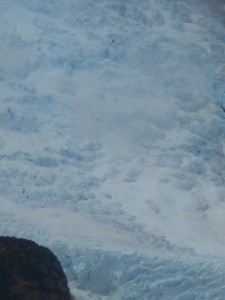
The blue seemed to glow from an inner light inside the glacier.
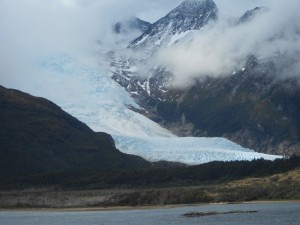
Glacier carving a path into the water.
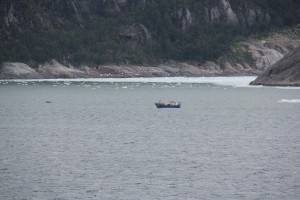
Fishing boat at the base of the glacier (closeup).
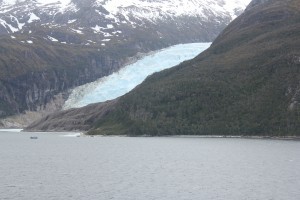
Same fishing boat, wide shot.

The apron of light blue around the promontory is not a trick of light; it’s the fresh water of the melting glacier meeting the salt water of the channel.

Waterfall from retreating glacier. The mist got thicker the further we cruised down Glacier Alley.
January 5, 2013
The Bottom of the World
http://www.chrisdelyani.com/events/
The Bottom of the World
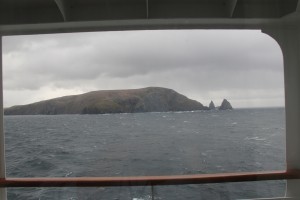
Cape Horn from our stateroom window.
At around six-thirty the next morning I woke up to the pitching and the creaking of the ship. We parted our stateroom curtains to reveal a dark, greenish-brownish mass of rock slide past us. Right on schedule, the ship was creeping toward the southernmost part of our journey, indeed the southernmost part of the world save for Antarctica: Cape Horn. Until that morning I’d gotten used to shuffling out of my stateroom much later in the morning, but the ship was planning to swing by Cape Horn for less than an hour before heading toward the Chilean fjords. So if I wanted to see the Horn above-deck, I had to get moving, and fast.
And what did I see? I saw a craggy cluster of islands, shrouded in mist, rising gloomily and forbiddingly from the white-capped, steel-gray ocean. The petrels that had so far followed the ship had largely abandoned us; the only bird I could see was a single giant petrel hovering in the icy air next to the ship. As I took in the beautiful desolation of this place after so many miles of travel – and so much anticipation to make it that far south – I got a strange feeling, a mixture of gratitude and sadness.
I couldn’t help thinking of a short story I’d read over twenty years earlier, back when I was taking my first baby-steps in the world of fiction: Ursula K. LeGuin’s 1982 short story “Sur,” in which the author ingeniously conjures an all-female expedition to the South Pole two years ahead of Roald Amundsen‘s historic 1911 discovery. LeGuin tells her story in language so clear, so vivid, that even today I have to remind myself the expedition never took place. I couldn’t help digging out the story after I got home from South America. And the story’s truth that I’d felt then seemed just as true as that morning on Cape Horn.
“To go, to see – no more, no less,” LeGuin’s nameless narrator says when explaining her intense desire to reach the Pole. But the harder she struggles to reach her goal, the more she realizes she’s making a mistake—“This is not a place where people have any business to be”—and by the time she and her fellow travelers climb and crawl their way to the Pole, where “nothing of any kind marked the dreary whiteness,” she regrets what she’s done. In the end she “lets” Amundsen take the credit for discovering the South Pole: a hollow victory.
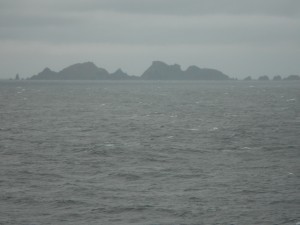
Crags rising gloomily in the mist (Cape Horn).
We were still several hundred miles from the shores of Antarctica, but even so, looking out at the Horn, the ship pitching and the wind stinging my face, I got that same sense: the sense that this ship, this crew, we tourists had no business here. The place was cold and barren; the waves were knocking us around. Cape Horn was all but telling us to leave, leave, leave.
And yet, as I stood on the glistening deck with my feet planted firmly on the boards, I didn’t want to leave. Here I was at the bottom of the world, or as close to the bottom as I thought I could manage. And as cold as I was, I wanted to cling to that moment, unable to let it go. But then a bitter gust of wind nearly knocked me off my feet, which I took as a sign from Nature to get the hell back inside. I went inside.
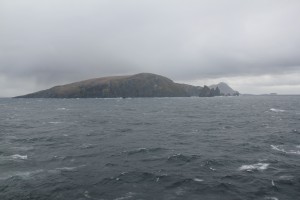
View of Cape Horn from the rear of the ship.
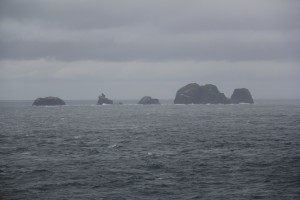
Rocky islands at Cape Horn.

Dan held his camera steady when he took this picture; it’s the ship that’s crooked.
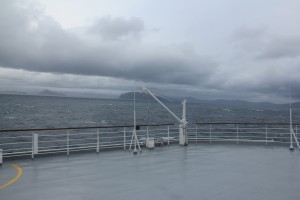
At times I felt as if I’d slide off the deck into the water like a chicken bone off a plate into the garbage.

The skies began to clear upon our return to the Strait of Magellan.
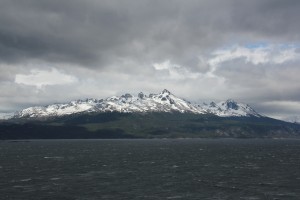
Back in the Strait’s calmer waters. We were now ready to see the glaciers of Glacier Alley.
January 2, 2013
Tierra Del Fuego
The Road To Ushuaia
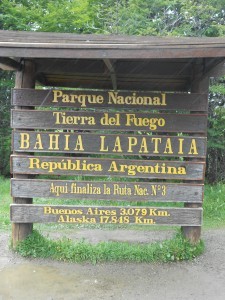
Tierra del Fuego is the terminus of a highway whose other terminus is located in Alaska. Depending on your perspective, the road ends — or begins — here.
Thanks to the rearranged travel schedule, the ship slid into the dock at Ushuaia – the most southernmost city in the world — several hours earlier than planned. This gave us plenty of time to explore the town as well as take a too-brief land tour of Tierra Del Fuego National Park, followed by a frigid but thrilling ride down the Beagle Channel, so named for the ship that brought Charles Darwin to that part of the world.
Our first stop that morning was Tierra Del Fuego. I felt as if we had barely time to take in the size, the beauty, the icy tranquility of the place before we had to pick ourselves up and head for the bus to leave. (Just like the penguins.) Then again, I probably couldn’t have lasted much longer than I already did: the air felt like a continuous dousing of icewater.
As for the boat ride, the strong winds and near-freezing temperatures proved both a blessing and a curse. On the positive side, the cold sent most of our fellow travelers inside, leaving the outside decks, which were just a few feet above the water’s surface, wide open for me and Dan to take pictures. On the negative side, standing out in the cold for a two-hour boat ride was no doubt the cause of the cold both of us caught just a few days later – a cold that stayed with us even after we got back home. Looking at the pictures now, I say it was worth it.

Tierra del Fuego.
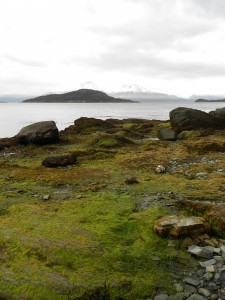
Tierra del Fuego. The green seemed greener amid all the white.

Post office at Tierra del Fuego, from which you could mail a postcard from the bottom of the world.
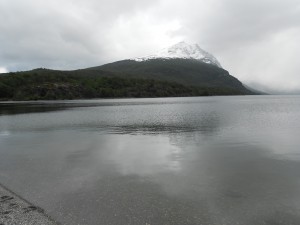
Lake and mountain at Tierra del Fuego. The place where I took this and the following picture struck me with its profound stillness.
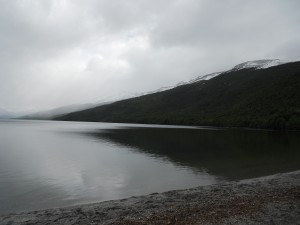
Mountain’s reflection,Tierra del Fuego.
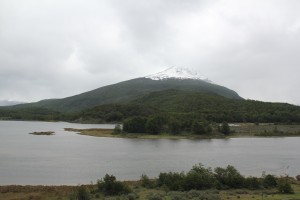
View from the visitor’s center, Tierra del Fuego.
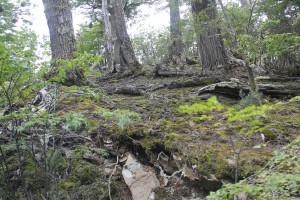
Even the trees there seemed to hold their own secrets.

Leaving the park behind as we pushed into the Beagle Channel.
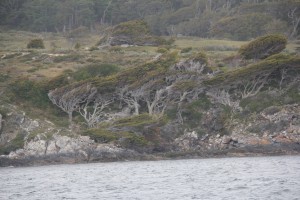
Wind-whipped trees (Beagle Channel).

Imperial cormorant in flight (Beagle channel).
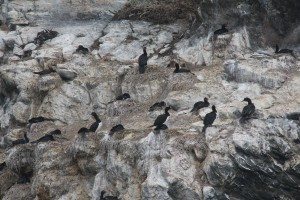
Rock cormorants (Beagle Channel).

Sea lions and cormorants (Beagle Channel).

Nesting cormorants (Beagle Channel).

Sea lions (Beagle Channel).

The sea lion looking straight at the camera would not stop making noise — a piercing, plaintive cry.
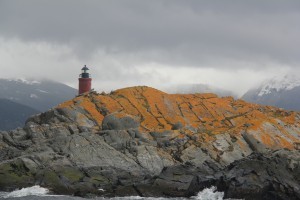
Lighthouse (Beagle Channel).

Leaving the lighthouse; heading back to Ushuaia.

Back on dry land (Ushuaia).

Leaving Ushuaia.
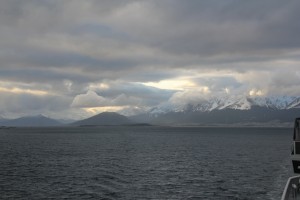
Sunset, Ushuaia.
January 1, 2013
Warm Wishes
Just a quick note to thank everyone on this site for your generous support in 2012. If I get even half that amount of support in 2013, I'll consider myself lucky.
I also wanted to let you know about a contest that the Erie (Pa.) Gay News is having for my book. Simply enter your name and info on their site for a chance to win one of five copies of You Are Here. Contest ends Jan. 15. The link is here:
http://www.eriegaynews.com/news/artic...
And for those of you following my South American travels, I've got a post on Tierra Del Fuego/Ushuaia coming out tomorrow, and a post on Cape Horn coming out Saturday (early morning PST for both posts).
Thanks, all! I wish you all that is fabulous for the coming year!
Chris
December 30, 2012
Water, Water Everywhere
Water, Water Everywhere
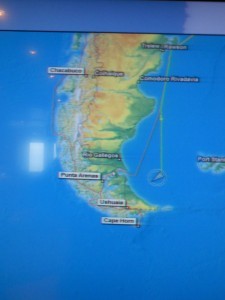
We were supposed to turn into the Strait of Magellan (following the red line on the map), but instead we went around the tip of Argentina to Ushuaia.
Sailing south of Puerto Madryn, we were supposed to turn into the Strait of Magellan for a day of scenic cruising and then dock in Punto Arenas, in Chile. But high waves and gale-force winds compelled the captain to deliver the bad news that the ship couldn’t turn into the strait without tipping over. So instead of two days of sightseeing, we got two days of riding the open ocean—and what a ride that was.
Even before the captain’s announcement, we’d already had our taste of rough seas; one night, the ship rocked from side to side so badly that I lay in bed, in near-total darkness, trying to remind myself that this kind of rocking was likely nothing worse than what most sea travelers endured, and not the coming of the next Poseidon Adventure. But even that didn’t prepare me for the two-day ride in store for us. I felt I was riding on a carousel horse, or a slow-moving kiddie roller coaster, except that this was no two-minute amusement park ride.
Even so, the scene from the ship’s outside decks – once they opened the outside decks to the passengers, that is – offered a constantly-shifting landscape of striking images. The play of waves and clouds, of sun and shadow, supplied its own drama. I can only imagine what the first seafarers , those explorers who navigated these waters in much cruder vessels than the one I was standing in, must have imagined when they first contended with these cold, harsh, dangerous waves, the wind gusting ceaselessly into their faces. As for me, the worst I had to contend with was the boredom – and the drained swimming pool.
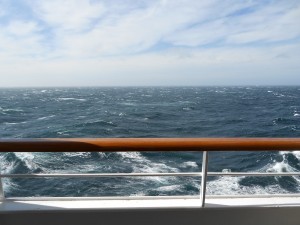
I took this picture off our balcony shortly after the captain’s announcement. With the wind and the ship’s rocking, I was too scared to get close to the railing to snap the picture.
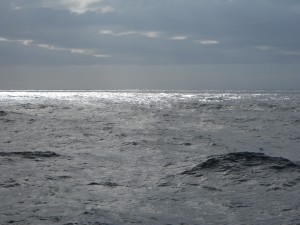
I took this picture after the captain deemed the outside decks safe for passengers. By then, we’d been on the open ocean for three straight days.
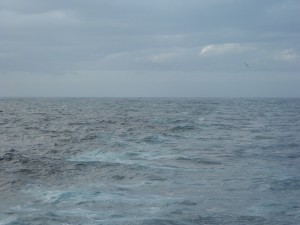
I took this picture only a couple of minutes after the picture above. The waves, the sky, and the wind made for ever-changing scenery.
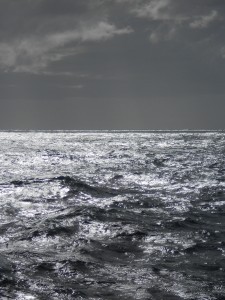
One of my favorite sea pictures, in which everything seemed to turn black and white. The sea foam seemed frozen onto the wrinkled surface of the water.

The bird in the upper right is not a gull, but one of the many giant petrels that followed our ship.
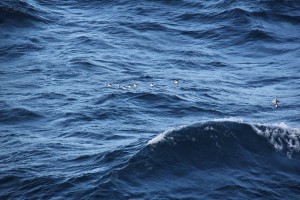
A group of Cape petrels riding the waves, many miles from shore. There’s a flying Cape petrel to the right.
December 26, 2012
Penguins!
Hope you all had a fabulous Christmas, with lots of cha cha heels waiting for you under the tree.
This week's post comes to you courtesy of the penguins of Punta Tombo, Argentina. These are not the penguins you'd find on Christmas cards.
http://www.chrisdelyani.com/events/



